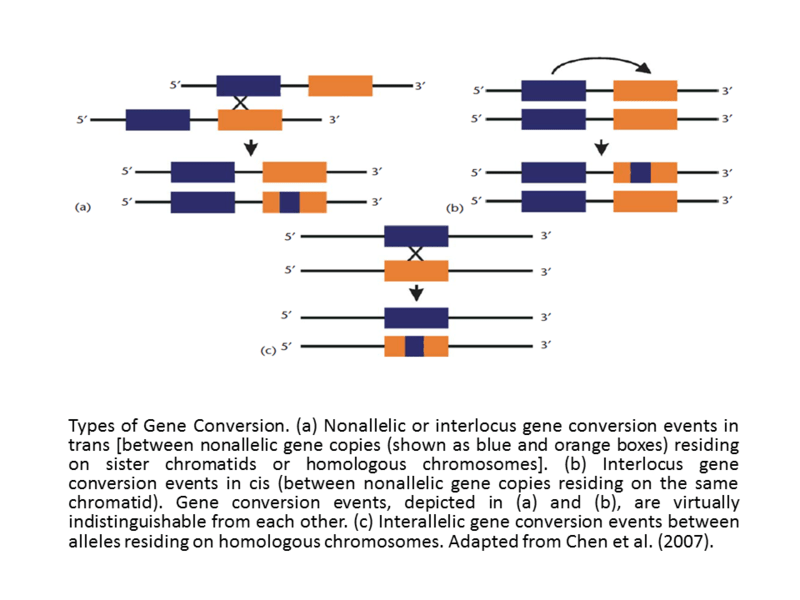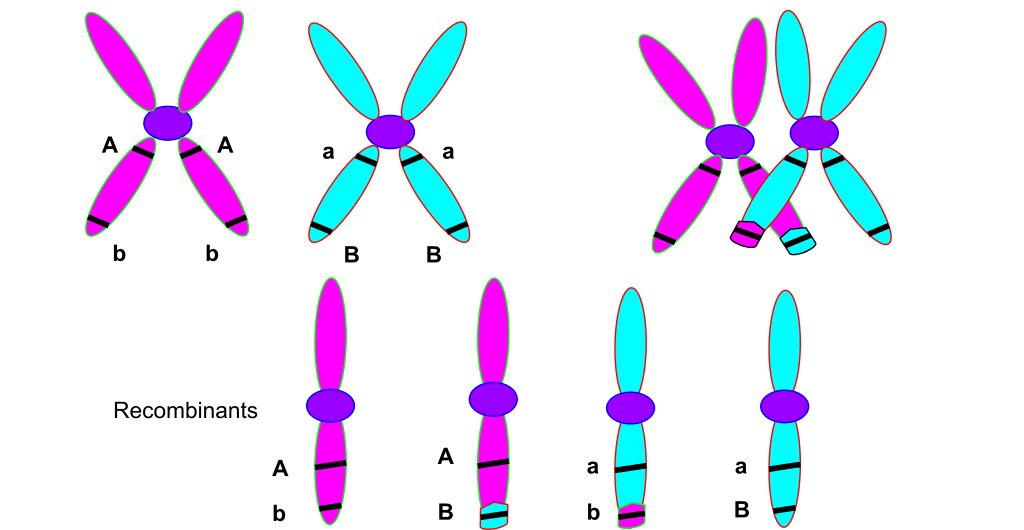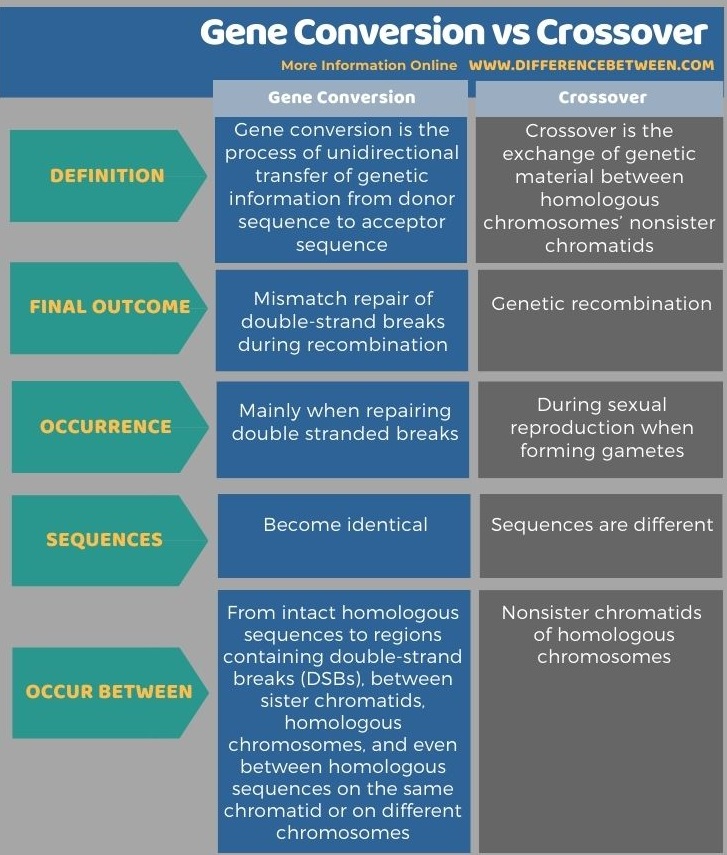The key difference between gene conversion and crossover is that gene conversion involves the unidirectional transfer of genetic material from a donor sequence to an acceptor sequence, while crossover is the exchange of genetic material during the sexual reproduction between two homologous chromosomes’ nonsister chromatids.
Gene conversion and crossover are two mechanisms of homologous recombination. Gene conversion is unidirectional. In gene conversion, the donor sequence remains physically unchanged. Crossover occurs in both directions. Crossing over happens during sexual reproduction when forming gametes. This mechanism involves the exchange of genetic material between two homologous chromosomes’ nonsister chromatids. Crossover occurs during the pachytene substage of prophase I of meiosis I.
CONTENTS
1. Overview and Key Difference
2. What is Gene Conversion
3. What is Crossover
4. Similarities Between Gene Conversion and Crossover
5. Side by Side Comparison – Gene Conversion vs Crossover in Tabular Form
6. Summary
What is Gene Conversion?
Gene conversion is a mechanism that involves a unidirectional transfer of genetic sequence information from a donor sequence to a highly homologous acceptor sequence. It is one of the two mechanisms of homologous recombination. In gene conversion, the donor sequence remains physically unchanged.

Figure 01: Gene Conversion
Gene conversion can occur from intact homologous sequences to regions containing double-strand breaks (DSBs). Therefore, it is one of the major mechanisms for the repair of DSBs. Moreover, it can occur between sister chromatids, homologous chromosomes, and even between homologous sequences on the same chromatid or on different chromosomes. Gene conversion is the main reason for various human genetic diseases.
What is Crossover?
Crossover is the exchange of genetic material between the nonsister chromatids of homologous chromosomes. It predominantly occurs during meiosis. Meiosis takes place when organisms produce sexual cells or gametes. During meiosis, homologous chromosomes recognize each other and form tightly bound pairs. Chromosomal crossover takes place in those events. Once they form tetrads, the genetic material exchange happens between nonsister chromatids. Genetic recombination is responsible for the genetic variation among the offspring.

Figure 02: Crossover
Unequal crossover can also happen between two homologous chromosomes. It occurs when they break at slightly different loci. As a result, one chromosome receives double the amount of genetic material while the other chromosomes do not receive any. Hence, gene duplication happens in one chromosome, while gene deletion occurs in the other chromosomes.
What are the Similarities Between Gene Conversion and Crossover?
- Gene conversion and crossover occur predominantly in meiosis.
- Moreover, they are possible during mitosis as well.
- They occur in chromosomes of eukaryotic organisms.
- Both are important driving forces in genome evolution.
- They are responsible for genetic variation.
What is the Difference Between Gene Conversion and Crossover?
Gene conversion refers to the unidirectional transfer of genetic material from one allele to the other allele (from donor sequence to an acceptor sequence). Meanwhile, crossover refers to the exchange of genetic material between homologous chromosomes’ nonsister chromatids. So, this is the key difference between gene conversion and crossover. Moreover, gene conversion occurs during the mismatch repair of double-strand breaks during recombination. Whereas, crossover takes place during the gamete formation in sexual reproduction. Thus, this is another difference between gene conversion and crossover.
Below is a summary of the difference between gene conversion and crossover in tabular form.

Summary – Gene Conversion vs Crossover
Gene conversion occurs during the repair of double-stranded breaks. But, crossover occurs during the sexual reproduction between homologous chromosomes’ nonsister chromatids. Crossover is responsible for the enhanced genetic variation in a population. Both homologous chromosomes receive the genetic material of the other. In gene conversion, the donor sequence remains physically unchanged while the acceptor sequence receives genetic information from the donor. Thus, this summarizes the difference between gene conversion and crossover.
Reference:
1. Chen, Jian-Min, et al. “Gene Conversion in Human Genetic Disease.” Genes, MDPI, 22 Dec. 2010, Available here.
2. “Chromosomal Crossover.” Wikipedia, Wikimedia Foundation, 19 Feb. 2021, Available here.
Image Courtesy:
1. “Gene Conversion Types 2” By Schandanam at English Wikipedia (CC BY-SA 3.0) via Commons Wikimedia
2. “Chromosomal Crossover” By Abbyprovenzano – Own work (CC BY-SA 3.0) via Commons Wikimedia
ncG1vNJzZmivp6x7pbXFn5yrnZ6YsqOx07CcnqZemLyue8OinZ%2Bdopq7pLGMm5ytr5Wau26zxKecZpufo8OmvtKipqdlkaOxbq%2FRqKqsp6aav3A%3D